The Zillertal is one of the great all-rounders of Austria’s summer scene – a 47km valley which burrows into the high Alps and serves up everything from easy, lift-serviced hikes to high-speed glacier skiing. Pretty Mayrhofen is its main holiday resort, but there’s accommodation right along the valley. Prices are very reasonable.
Altitude: 1870m (Mayrhofen)
Lifts open in summer: 10 gondolas and cable-cars
Walking trails: 1400km
Cycle paths: 1200km mountain bike trails and road cycling routes
Lift pass: from 59.90€ for Zillertal Activ Card.
Official Site
Essential Advice for the Perfect Holiday
ARVE Error: For the maxwidth (maxw) option you need to have normal or lazyload mode enabled, either for all videos in the plugins options or through shortcode e.g. [youtube id=123456 mode=normal maxw=999 ].
Turn off the A12 autobahn at Wiesing, and you’d be forgiven for thinking you’d got the wrong valley. First comes a road tunnel, then a McDonald’s, and finally one of Europe’s largest sawmills. But don’t let them put you off. One of Europe’s greatest arenas of mountain sports awaits, and the further you drive down the Zillertal, the more magnificent it becomes. As the sawmill suggests, it’s also a place with a life beyond tourism, and is all the more attractive because of it.
Fugen, Kaltenbach, Zell am Ziller, Hippach and Mayrhofen are the main stops en route, and you pass three lift systems as you go (which in winter serve three big ski areas). The mountains grow taller, and their faces more vertiginous, and by the time you reach the far end of the valley you’re not far from the main Alpine ridge that separates Austria from Italy. Thanks to the Zillertal Natur Park, 422 square km of the landscape at the southern end of the valley have been preseved in a raw, undeveloped state.
From Zell am Ziller you can travel east along the Gerlostal into the neighbouring Salzburgerland. Meanwhile, beyond Mayrhofen you can burrow south down two valleys. The narrow, rugged Zemmgrund is home to the Schelgeis reservoir and the mountaineering village of Ginzling – and is the best launchpad into the Zillertal Natur Park. Meanwhile the Tuxertal is peppered with cute meadows and sun-blackened hay barns, and leads to the Hintertux glacier.
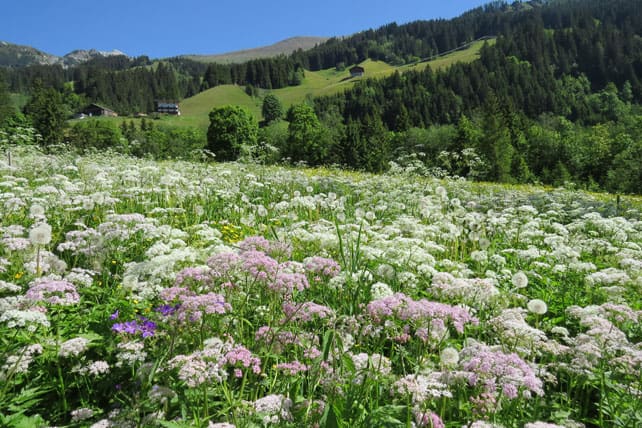
In other words, you’ve unlocked a vast mountain playground. Ten years of summer holidays would only scratch their surface, so even though the roads are good and the public transport even better, don’t even try to explore it all in one trip.
Instead, cherry-pick your highlights, mixing the gentler, forested landscapes of the north with the raw splendour of the Zemmgrund and Tuxertal of the south, or pick one resort – such as Mayrhofen – and stay put. Either way, you’ll find a mouthwatering range of activities on the menu. Mountain-biking, gentle walks, via ferrata, rock-climbing, hut-to-hut hikes, 60 signposted running and Nordic walking trails, rafting, purpose-built children’s playgrounds – they’re all on offer here.
By the way, if you are going to explore several parts of the valley, the Zillertal Activcard is a useful tool. It allows you to ride any of the ten gondolas and cable-cars in the valley (eight of them can transport bikes), as well the buses and trains, and to visit all six of the valley’s open-air swimming-pools. The only drawback is that it has to be used on consecutive days.
Where to Walk
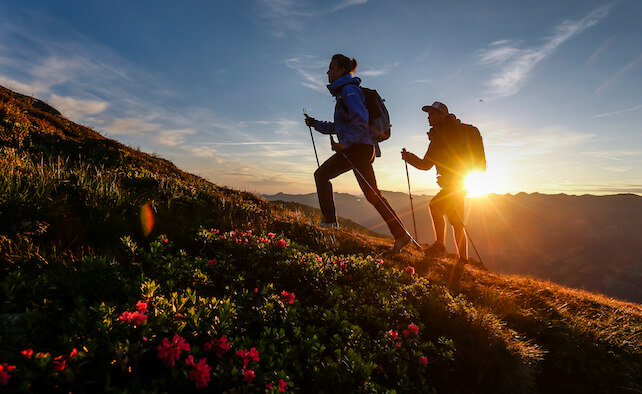
The Zillertal has beautiful scenery of mountain lakes, glacial and rocky terrain. It’s an outstanding destination for hikers and the Zillertal Natur Park runs an extensive programme of daily guided walks around the valley (not just within the park boundaries). These range from wildlife-watching tours to a culinary herb trail in Ramsau, and an alpine hike with Peter Habeler who, together with Reinhold Messner in 1978, completed the first ascent of Everest without oxygen. For those in search of a multi-day challenge there are serveral hut-to-hut routes: including the 60km Peter Habeler Route and the 73km Berliner Höhenweg.
In Mayrhofen, the Penken gondola is open all summer and provides quick access to some lovely walks over grassy terrain, where there’s an artificial lake and a modern chapel. Walking to the Zimmereben hut throws out some spectacular views over the resort, and there’s the chance to enjoy coffee, cake, and local Schnapps. The walks from the top of the Rosenalm gondola just outside Zell am Ziller meander past streams and waterfalls, and there are a couple of restaurants to stop off for lunch.
The Durlassboden, just outside Gerlos, is a large reservoir with some varied walks around it, some of them taking up to three hours to complete. The Schlegeis walk to Pfitscher Joch over the Italian border takes two hours. You can walk from the attractive Alpengasthaus Breitlahner to the Grahwandhutte in around 90 minutes. Or go to Restaurant Adlerblick by bus and walk to the Hohenau Alm, which is also known as ‘little Tibet’. An easy walk is reached by taking the Ahorn cable-car to the top where there’s a small lake you can walk around and an all-wood children’s playground. Other attractive walks are reached by taking the Penkenbahn up to Penkenjoch.
Further afield you’ll find the Krimml Waterfalls, which are Europe’s highest falls and fifth biggest in the world, set in the lovely Hohe Tauern National Park. There’s a 4km trail here with lots of viewing points and platforms making it possible to get up close to the natural spectacle. The lowest waterfall can be reached on foot from the parking area in under 15 minutes.
Mountain Biking and Road Cycling
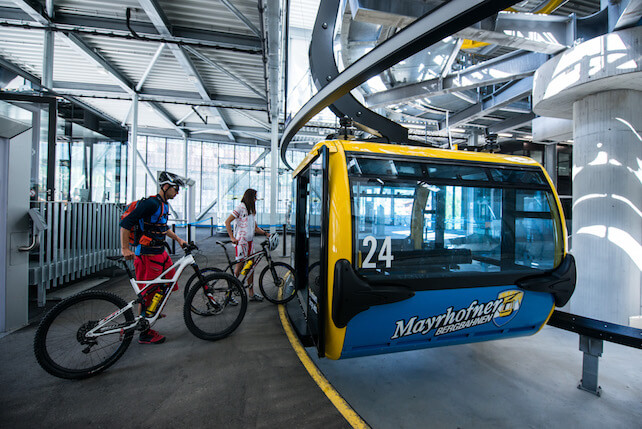
General information on biking in Zillertal can be found on the local tourist office website, where there’s information on where to rent bikes, guided tours, mountain huts you can reach by bike and single trails for advanced riders. For a personal guided tour, Stefan Kröll of Bike Guide Zillertal offers e-bike, road bike and mountain bike tours from the village of Finkenberg, four kilometres up the valley from Mayrhofen. He takes groups of up to 10 bikers for a morning or a day of riding at whatever pace you want.
Meanwhile, in Mayrhofen, the Penken gondola is open during the summer months for some lovely walks and bike rides. From the top of the lift there’s the well-maintained Panorama Trail, which leads up to the Penkenjoch past the paragliding launch site and the Knorren via ferrata.
Another good ride starts in Mayrhofen and climbs into the Zemmgrund valley. Here, it follows an impressive gorge before ending up in the attractive climbing village of Ginzling in the Zillertal Natur Park.
A bike tour on Penken
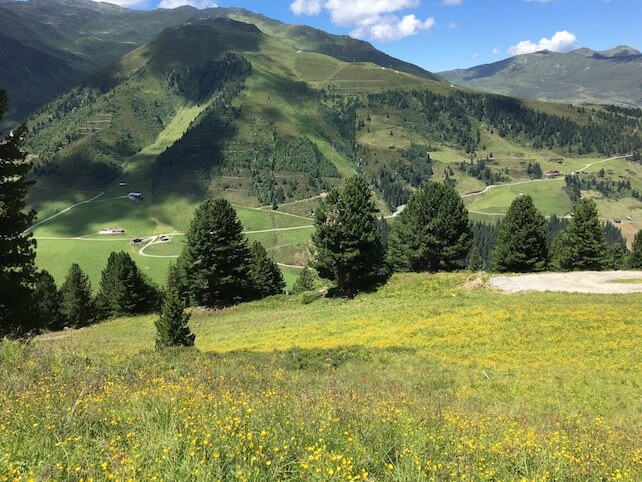
“We’ll start by climbing 1000m up to the top of Penken – it shouldn’t take more than 90 minutes”, announced Stefan Kröll on a recent e-bike tour. Cheating? Anyone who has ridden the Penkenbahn gondola up to Mayrhofen’s main ski area in winter will know just how steep is the terrain. Trails used by woodcutters wind up through the forest. There are no pistes, and skiers wanting to return directly to the resort have to do so by lift.
We climbed slowly in blazing sunshine on an unsurfaced track with stops every 15 minutes to take on water and admire the spectacular scenery. With an e-bike you still have to pedal as hard as ever, but the four-speed motor, when you use it, makes the going easier. On the flat you’ve a battery range of 100km. On the steeps, using the bottled energy with care, you’ll manage a couple of thousand vertical metres.
Much later we paused to look at the fabled Harikiri, one of Austria’s steepest black ski runs with a pitch of 78 degrees at it steepest. Thankfully, Stefan didn’t take us down anything like that. He opted for another farming trail that winds steeply through a series of hairpin bends towards the pastures below the forest. These are not under any circumstances to be underestimated by inexperienced visitors.
Climbing and Via Ferrata
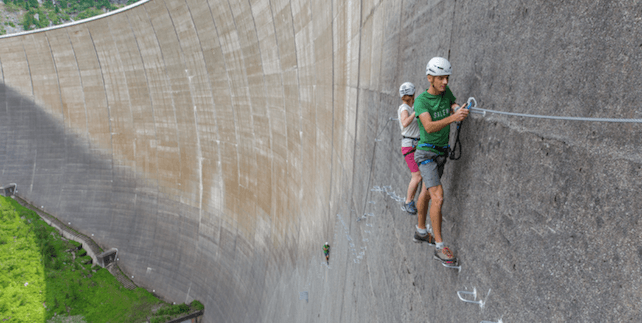
Mayrhofen and Ginzling are both important climbing centres, with 13 different routes on the Gschoess am Penken and 22 routes on the Spiegelwand at Ginzling. The Zillertal has an impressive choice of routes, and outdoor guide Bernhard Neumann will guide you on any of them.
And if you haven’t tried a via ferrata before, this is the place to do it. These fixed rope routes are set up with wire ropes and iron bolts that are screwed into the rock to secure yourself to whilst climbing. They are ideal if you want to explore beyond the normal hiking trails, giving yourself more of a challenge. The Zillertal’s 14 via ferratas offer varying degrees of difficulty, just as in actual rock climbing. But almost everybody can master the easy A level routes, whereas the level D/E routes require very strong arms and legs as well as a high level of skills and fitness.
The via ferrata on the Schlegeis dam is spectacular and not the most difficult, reached along the toll road beyond the village of Ginzling. It’s the newest via ferrata in the area and stands out from the others because the fixings are into the dam wall rather than the usual rock.
The Kids’ Climbing Grounds on the Spieljoch mountain at Fugen is an adventure climbing park with a wide choice of trails. Experienced coaches will help whenever it’s needed, and provide basic instruction.
Gerlos has a climbing tower in the village centre, with equipment available to hire and regular climbing workshops. The Zillertal area has three high rope courses: in Gerlos, Kaltenbach and Mayrhofen.
Other Activities: From Watersports to Summer Skiing
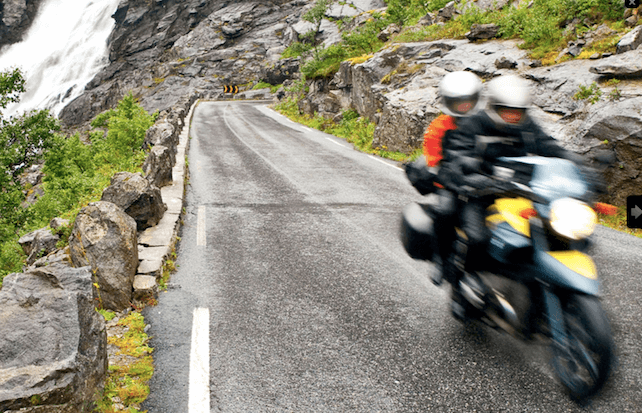
You can join a boat tour along the fast-flowing Ziller river, which takes two hours and is open to children over five years of age. There’s also white-water rafting along the same river, paddleboarding, and canyoning for all levels of expertise. The area has a mountainboard school and a grass-ski school based at the Jausenstation Klammlhof. All of these summer sports can be arranged through Aktiv Zentrum Zillertal.
For keen skiers, the Tux Glacier at Hintertux is open 365 days per year and is one of the most extensive areas for summer skiing.
Other summer activities include fishing in Gerlos lake (for a fee) or even playing golf from the waterside onto a floating ‘hole’. There’s also an 18-hole golf course in the Zillertal. At Penkenjoch on the Penken mountain above Mayrhofen there’s a funsport station with a lake for zorbing. A Birds of Prey Show takes place on the Ahorn mountain at 2pm daily from Saturday to Thursday, and there’s a cheese-making farm to visit at Fugen.
Alpengasthaus Breitlahner organises a motorbike tour that starts in Kitzbuhel, continues over the Gerlos Pass into the Zillertal, and on to the Schlegeis-Speichersee. You spend the night in the Breitlahner before continuing on the Zillertaler Hohenstrasse the following day.
Where to Stay
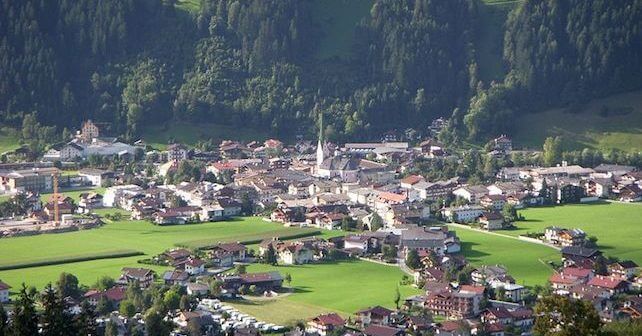
Hotel Elisabeth
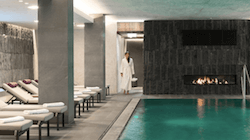
Hotel Zillertalerhof

Sporthotel Manni
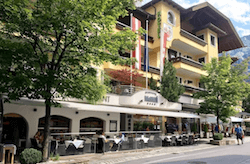
Alpendomizil Neuhaus and Landhaus St Josef
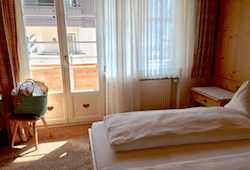
Hotel Brau, Zell am Ziller
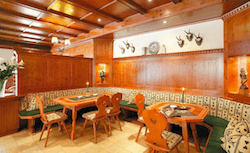
Hotel Sieghart, Hippach
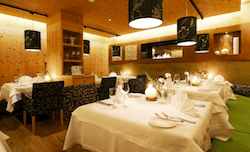
Hotel Stefanie, Hippach
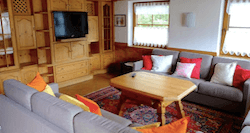
Landgasthof & Hotel Linde, Stumm
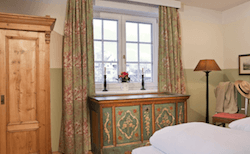
Sporthotel Hintertuxerhof
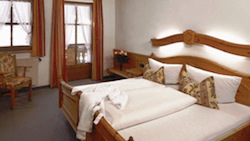
Hotel Vierjahreszeiten, Hintertux
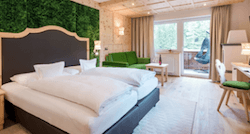
Huber’s Boutique Hotel, Hintertux
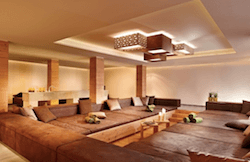
Wellness Hotel Bergland, Hintertux
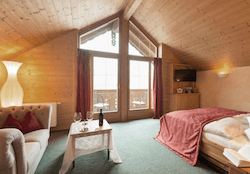
Tuxerhof Alpin Spa Hotel
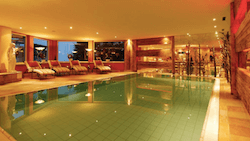
Hotel-Garni Forelle, Vorderlanersbach
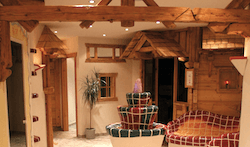
Sport Vital Hotel Central, Lanersbach
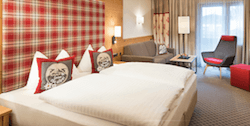
Where to Eat
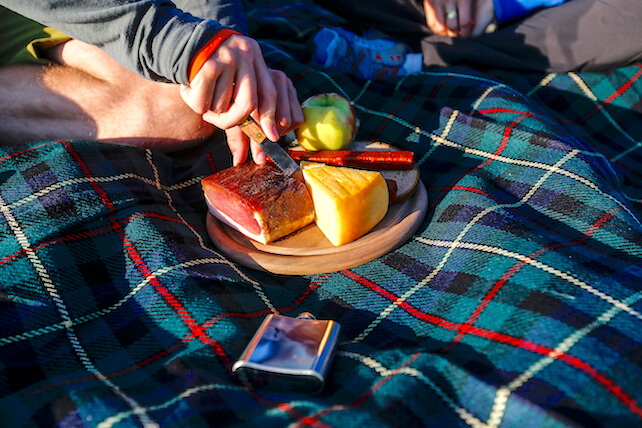
This is mainly in the hotels, with the best including the restaurant in the traditional Hubertushof in Hippach. The free bus to Mayrhofen stops right outside, or you can ride all the way along the riverside cycle track to Mayrhofen in one direction or Zell am Ziller in the other. Venison is the speciality and the various dishes featuring it are delicious.
The Brau Hotel is in Zell am Ziller’s main square, and its restaurant serves delicious cuisine with an emphasis on fish which, as you’d expect, comes almost exclusively from the river outside the door (trout is the speciality). Other ingredients come from the Kolbitsch family’s own farm, as well as organic produce from the local region. Their beer is brewed in Zell at the family’s brewery. A gourmet place to eat in Zell is Restaurant Heleni at the Posthotel.
The award-winning restaurant in Landgasthof & Hotel Linde in Stumm is presided over by chef Hannes Ebster, who conjures up inventive cuisine which is served in the dining rooms, the vaulted cellar, the conservatory, on the terrace or in the orchard. A less exhaulted choice in Stumm are La Pasta restaurant in Das Kleine Hotel, and Restaurant Nester.
The swanky gourmet restaurant at Hotel Sieghard in Hippach offers two set menus including a three-course light summer menu. These change daily and there are also themed ‘Connoisseur’ menus that could be anything from vegetarian to 100% Austrian produce. Chef Markus Pichler creates everything from ‘grandmother’s hearty, classic dishes’ to light modern cuisine. The restaurant in the Wellness Hotel Bergland at Hinterux uses fresh, natural ingredients such as dandelion, mountain hay and traditional herbs. Flavour enhancers, preservatives and artificial additives are all replaced by herbs (partially from the hotel’s own herb garden) and natural spices.
Other recommended eateries include Gasthaus Innerboeden and the Gravanthuette both at Ginzling, Just outside the village is the attractive Alpengasthaus Breitlahner which has a terrace with lovely views.
During the summer months, some 40 mountain restaurants and huts are open. Our favourite is the Schulhaus set high above Zellberg on the outskirts of Zell am Ziller. It can be reached by car up a winding road, or on foot on a steepish forest trail which takes an hour, depending on your fitness level. It’s well worth the trek and it’s open in the evening, too. Our favourites here include Wiener Schnitzel von Milchkalb and a delicious Kaiserschmarrn.
It’s also worth the long hike up to the gourmet Wedelhutte and Kristallhuette restaurants, which are reached along the narrow, winding Zillertaler Hohenstrasse road from Kaltenbach and Fugen. You can stay the night in one of the 18 double bedrooms at the Kristallhuette, and there’s also a spa here. The Ahornhuette on the Ahorn mountain is also recommended, as is the Granatalm at Penken above Mayrhofen.

Further details from the Zillertal Tourist Office. Also see our Mayrhofen resort report for information on the village in winter.










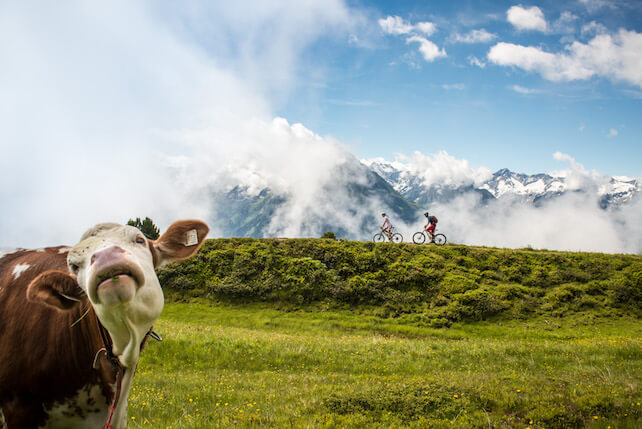
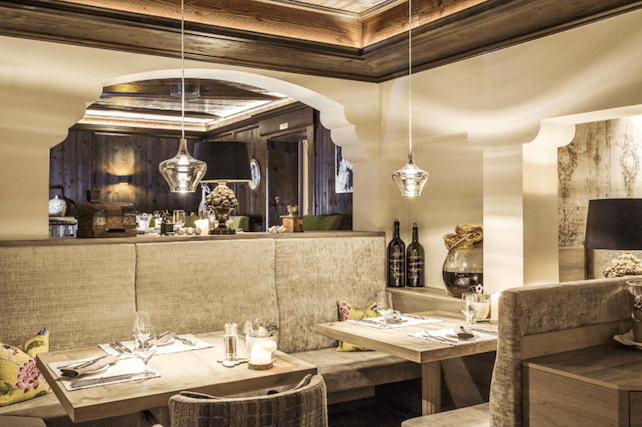
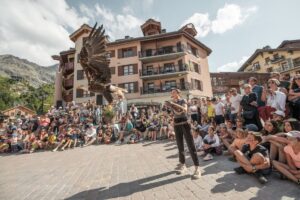
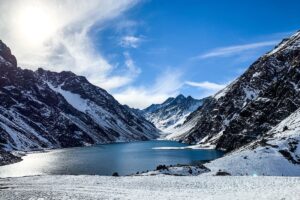
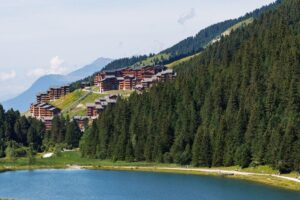
Add Comment